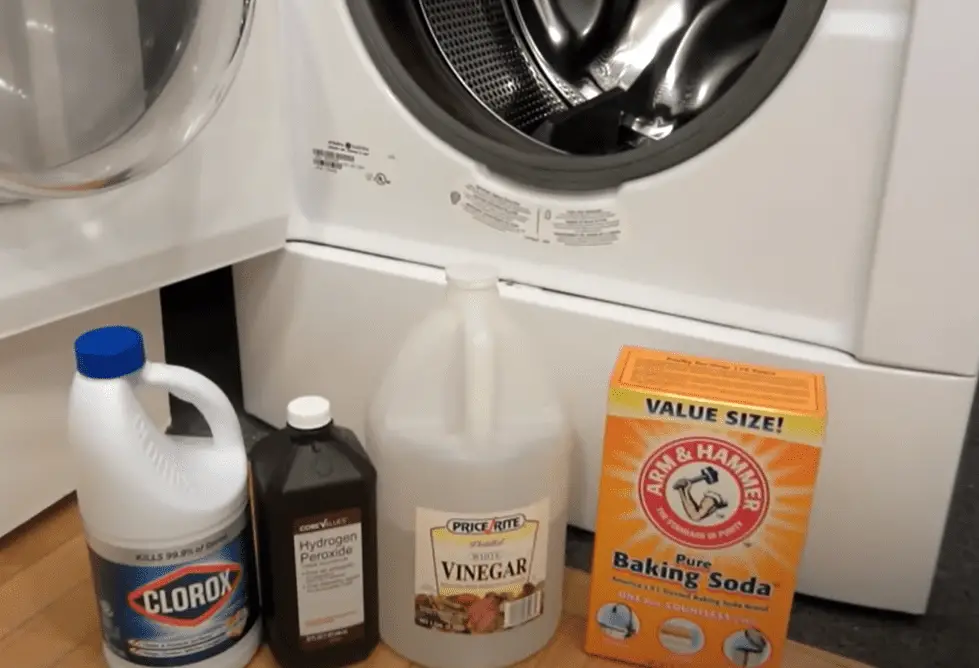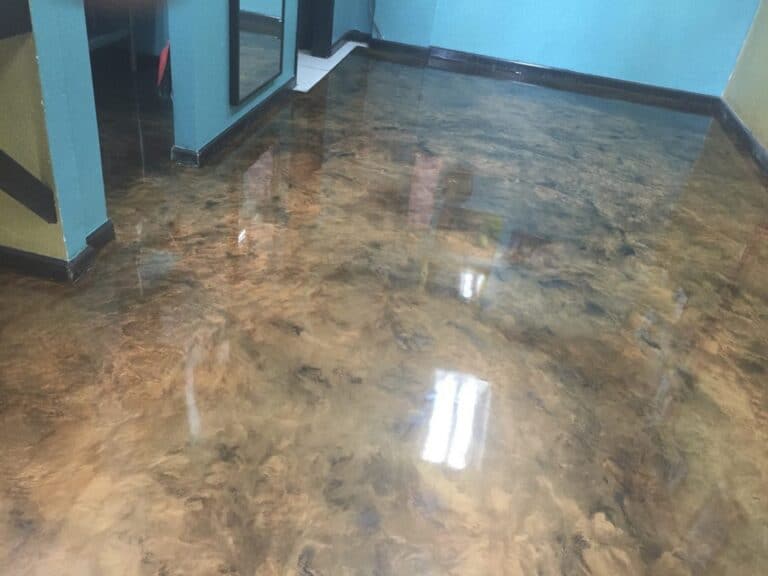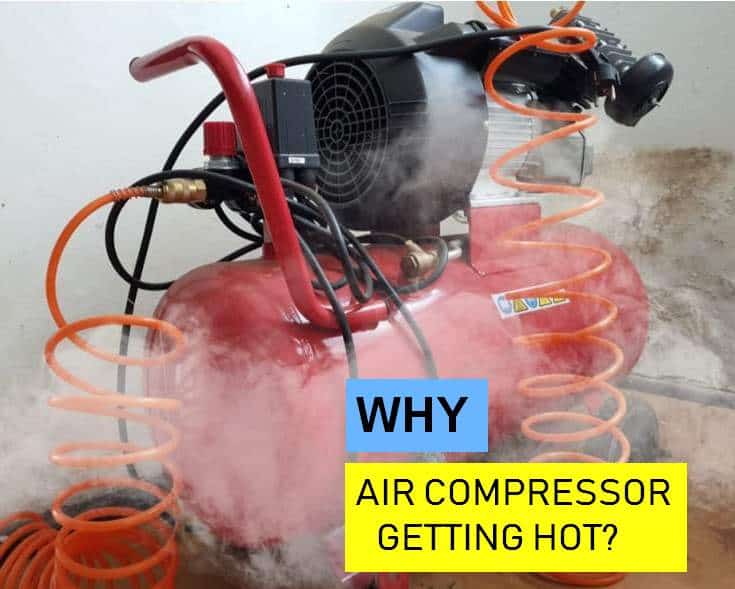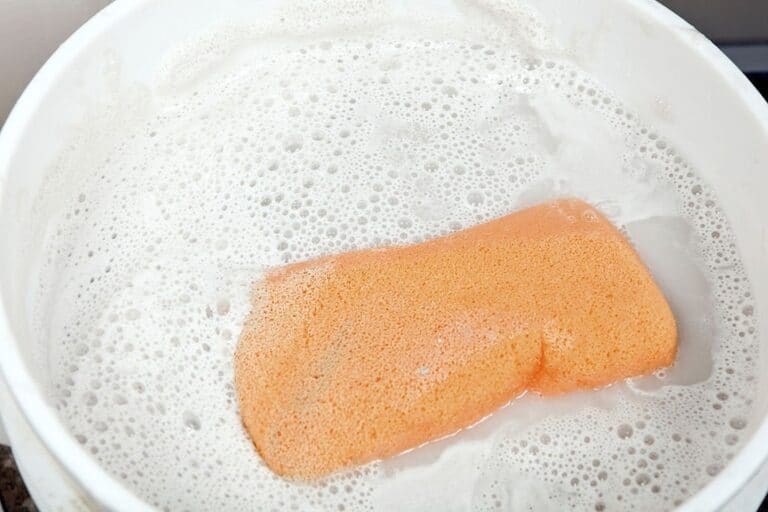Can You Mix Vinegar and Bleach for Laundry and Cleaning Clothes?

Vinegar and bleach are both powerful cleaning agents that are commonly found in households around the world. But can they be mixed together for laundry and cleaning clothes?
The short answer is no. Mixing vinegar and bleach can be dangerous and potentially deadly, and it is also not an effective cleaning method.
In this blog post, we’ll take a closer look at the risks and drawbacks of mixing vinegar and bleach and explore safer and more effective alternatives for cleaning clothes and other surfaces.
So before you mix vinegar and bleach in your next load of laundry, read on to learn more about the potential risks and drawbacks of this practice.
The Popularity of Vinegar and Bleach as Cleaning Agents
Vinegar and bleach are two common household cleaning agents that have been used for many years.
Vinegar is a versatile liquid that can be used to clean in a number of ways, such as to get rid of stains, clean surfaces, and get rid of smells. It is also a natural and environmentally friendly alternative to many harsh chemicals.
Bleach, on the other hand, is primarily used for disinfecting and whitening. It is a strong and effective cleaner, but it can also be harsh and potentially harmful if not used properly.
Even though vinegar and bleach are different, they are both commonly used to clean because they work well and are easy to find. Vinegar is cheap and can be found in almost every home, so it’s a convenient and cheap choice. Bleach is also easy to find and is often used in public places like hospitals and schools because it kills germs quickly.
In recent years, there has been a trend towards using more natural and eco-friendly cleaning products, and vinegar has gained even more popularity as a result. Many people prefer to use vinegar over bleach due to concerns about the environmental and health impacts of bleach.
But bleach is still used for some jobs, like disinfecting surfaces during cold and flu season or getting rid of tough stains that vinegar can’t remove.
The Potential Risks and Benefits of Mixing Vinegar and Bleach
Mixing vinegar and bleach can be a dangerous and potentially harmful practice. When these two substances are mixed together, they can produce chlorine gas, which can be toxic and potentially deadly.
| Inhaling chlorine gas can cause respiratory problems, such as coughing, difficulty breathing, and chest pain. It can also cause eye irritation, nausea, and vomiting. In severe cases, exposure to chlorine gas can lead to organ damage or death. When you mix vinegar and bleach, you can get harmful byproducts like chloroform, which is dangerous if you breathe it in or eat it. |
Besides the dangers of mixing vinegar and bleach, it’s also important to remember that this method doesn’t work. If you mix vinegar and bleach, it may cancel out their effects and make them less useful for what they were meant to do.
Can You Mix Bleach and Vinegar for Laundry?
Mixing bleach and vinegar is generally not recommended for laundry or other cleaning tasks.
Like already mentioned previously, these two substances can produce chlorine gas when mixed together, which can be toxic and potentially deadly. When you mix bleach and vinegar, you can also get harmful byproducts like chloroform, which is dangerous if you breathe it in or eat it.
Aside from the dangers of mixing bleach and vinegar, it is also important to remember that this is not a good way to clean laundry. It is generally safer and more effective to use vinegar and bleach separately for their intended purposes, or to use other cleaning agents that are specifically designed to be mixed together.
There are safer and more effective alternatives to mixing bleach and vinegar for laundry. For example, vinegar can be added to the rinse cycle of a load of laundry to help remove stains and deodorize clothes.
Bleach can be used to whiten and disinfect clothes, but it should be used on its own and not mixed with vinegar or other cleaning agents. It is also important to carefully follow the instructions on the labels of these products and use them as directed.
Even though mixing vinegar and bleach can be dangerous and isn’t very useful, there are some limited situations in which using both substances together may be helpful. For example, you might be able to get rid of blood or red wine stains with a solution of vinegar and bleach that has been diluted.
Others You Can Not Mix with Bleach
Vinegar isn’t the only cleanser that shouldn’t be mixed with bleach. Bleach also produces chlorine gas when it combines with ammonia. Some cleaners, pesticides, and hydrogen peroxide can also react with bleach.
Numerous cleaning agents contain a component called limonene, which gives them a citrus scent. When bleach fumes interact with limonene, they produce tiny particles that may be harmful to humans’ and animals’ health. However, further study is needed to find the potential health consequences of these particles.
Why People Mix Bleach and Vinegar
Why do people mix bleach and vinegar if it produces harmful chlorine gas? This question has two possible answers.
- The first is that vinegar reduces bleach’s pH, making it more effective as a disinfectant.
- The second is that many are unaware of how hazardous this combo is and how rapidly it reacts.
Many people believe that combining cleaners and disinfectants gives them an advantage. Unfortunately, they don’t often comprehend that the added cleaning power isn’t enough to outweigh the significant health risk.
Maybe they think the solution will be better at getting rid of that ugly stain on the couch or the gross mold on the bathroom tile. Others are simply unaware of the dangers associated with mixing vinegar and bleach or how rapidly the two can react to form poisonous chlorine gas. In any case, mixing these compounds is extremely hazardous.
Is it Safe to Mix Bleach and Vinegar in Small Amounts?
If mixing the two can potentially create poisonous chlorine gas, then maybe it is safe mixing in small amounts? Will the benefit outweigh the risk?
There is a good chance that even small amounts of chlorine gas, just under 5 parts per million (ppm), will make your eyes, throat, or nose itch. Combining these two cleaners is never a good idea in the first place.
Chlorine has a strong, unpleasant smell. This is not like several other harmful compounds, such as carbon monoxide. Following the mixing of cleansers, it’s a good idea to leave the area immediately if you notice a strong smell or odor.
The intensity of the symptoms you experience after inhaling chlorine gas is determined by the concentration of the gas (measured in parts per million (ppm)) and the length of time you inhale it.
| Concentration (ppm) | Effect in Human |
| 0.1 to 0.3 | Humans may detect the unpleasant smell of chlorine gas in the air at this level. |
| 5 to 15 | This level concentration causes irritation of the mucus membranes in the mouth and nose. |
| Above 30 | Chlorine gas over 30 ppm may cause chest pain, difficulty breathing, and coughing. |
| Above 40 | Concentrations above 40 ppm can cause dangerous fluid to build up in your lungs |
| Above 430 | More than 430 ppm of chlorine gas can indeed be fatal within 30 minutes of inhalation. |
| Above 1000 | Inhaling chlorine gas at levels higher than this can be fatal right away. |
Can You Combine Bleach And Vinegar In A Washing Machine?
You should not mix your bleach and vinegar when you are doing laundry. The obvious reason is that it will make your clothes smell bad. When you pull your clothing out of the washer, chlorine gas may be released. Additionally, it may leave a residue of chlorine gas on your clothing.
If you insist on using bleach and vinegar, you should use them separately, not combine them. If you use bleach in your laundry, it’s a good idea to wait a few loads and then use vinegar afterward.
What To Do if You Accidentally Mix Vinegar and Bleach?
If you suspect that you have accidentally mixed vinegar and bleach, the first thing you should do is move to a well-ventilated area. Open the doors and windows to let in fresh air and help get rid of the chlorine gas. If you are unable to leave the area, cover your nose and mouth with a damp cloth or towel to help filter the air you are breathing.
If you are coughing, having trouble breathing, or feeling pain in your chest, you should go to the doctor right away. Call your local poison control center or go to the emergency room for further treatment. Be sure to let the medical professionals know that you have been exposed to chlorine gas, as this will help them provide the appropriate treatment.
It is also important to clean up the area where the vinegar and bleach were mixed. Wear gloves and protective eyewear to avoid contact with the harmful chemicals. Use a detergent or soap and water to thoroughly clean the area. If the mixture was spilled on clothing, you should remove the clothing and wash it separately from other items.
Accidentally mixing vinegar and bleach can be a dangerous and potentially harmful situation. It is important to take immediate action to protect your health and safety, and to seek medical attention if necessary. Be sure to follow the steps outlined above to minimize the risks and clean up the area properly.
Symptoms Of Exposure To A Bleach Mix Vinegar
The severity of symptoms caused by chlorine is directly related to the amount of chlorine gas that is breathed in. Symptoms usually appear immediately. Most people who are exposed to small amounts of chlorine gas live through it without any problems.
Short exposure to chlorine gas can cause your nose, throat, and mouth to be itchy. If you inhale chlorine deeply, you may suffer from lung inflammation.
If you unintentionally breathe in chlorine, you may experience the following symptoms, according to the Centers for Disease Control and Prevention:
- Nausea
- Vomiting
- Coughing
- Wheezing or shortness of breath
- Tightness in the chest
- Blurry vision
- Frostbite-like skin injuries
- Burning in the nose, throat, and eyes
Is Chlorine Bleach Better Than Mixing Vinegar And Bleach?
Most people think that using chlorine bleach on its own is safer and works better for cleaning and disinfecting than mixing vinegar and bleach.
Bleach with chlorine is a strong and effective disinfectant that is used a lot in places like hospitals and schools. It is also often used in homes to do things like whiten and disinfect surfaces and do laundry.
While chlorine bleach is a strong and effective cleaner, it is important to use it safely and as directed. It can be harmful to the skin and eyes, and it should not be ingested or inhaled. It is also important to follow the instructions on the label, as using too much bleach or leaving it on surfaces for too long can be damaging.
In conclusion, most people think that chlorine bleach is safer and better for cleaning and disinfecting than a mixture of vinegar and bleach. Even though both vinegar and bleach can be used to clean, mixing them can be dangerous and possibly harmful, and it may not work as well as using chlorine bleach by itself. It is important to use cleaning products safely and as directed, and to consider alternative cleaning methods if necessary.
Alternative Way To Mixing Vinegar And Bleach
There are many alternative ways to clean and disinfect laundry and clothes without mixing of vinegar and bleach. These methods can be safer and more effective, and they may be more suitable for certain types of fabrics and stains.
One alternative to using vinegar and bleach for laundry is to use oxygen bleach. Oxygen bleach is a non-chlorine bleach that is safe for most fabrics and colors. It can be used to whiten and brighten clothes, and it is also effective at removing stains and deodorizing. Oxygen bleach can be found in a powder or liquid form, and it can be used in place of regular bleach in the laundry.
Another alternative is to use enzymes. Enzymes are protein molecules that can break down stains and odors, making them effective at removing tough stains and deodorizing clothes. Enzymes can be found in many laundry detergents, or they can be purchased separately and added to the laundry.
For cleaning and disinfecting surfaces, there are many alternative cleaning agents that can be used in place of vinegar and bleach. For example, rubbing alcohol or hand sanitizer are both alcohol-based cleaners that can be used to disinfect surfaces.
Another good disinfectant that can be used on many different surfaces is hydrogen peroxide. There are also many commercial disinfectants that are specifically designed for cleaning and disinfecting surfaces, such as Lysol or Clorox Disinfecting Wipes.
Conclusion
Vinegar and bleach are both popular cleaning agents that are widely used for a variety of tasks. Even though vinegar is often chosen because it is natural and good for the environment, bleach is still a strong and effective cleaner that is used in many places. But mixing both together is a no no.
In conclusion, there are many alternative ways to clean and disinfect laundry and surfaces without using vinegar or bleach. These methods can be safer and more effective, and they may be more suitable for certain types of fabrics and stains.
It is important to carefully follow the instructions for using these alternative cleaning methods, and to consider the suitability of these methods for the specific task at hand.





